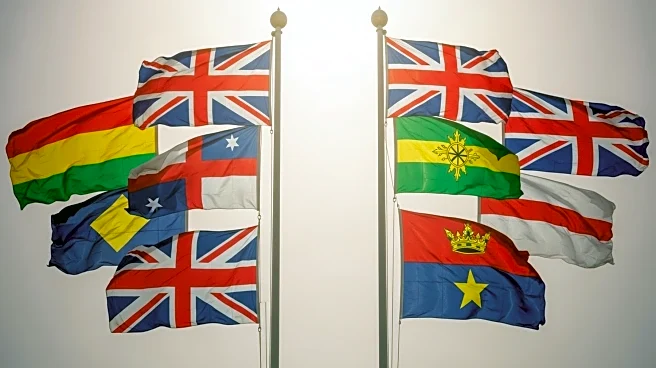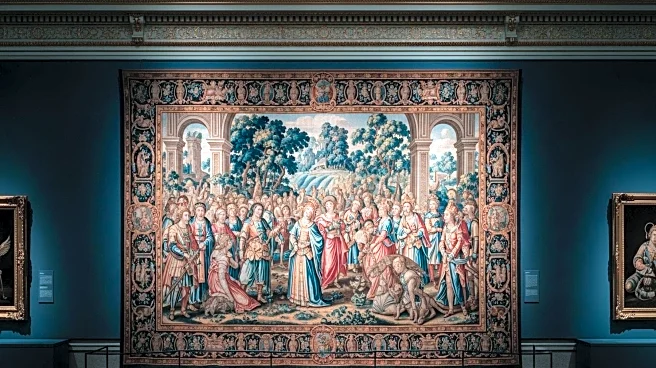What is the story about?
What's Happening?
In recent weeks, Britain has experienced a noticeable increase in public displays of national flags, including the St George's Cross. These flags are being prominently displayed on lamp-posts, highway bridges, and pedestrian crossings, typically seen during sporting events or royal celebrations. This surge in flag displays reflects a complex relationship with national identity, as communities express pride and solidarity amidst changing social and political landscapes.
Why It's Important?
The increased visibility of national flags in Britain highlights ongoing discussions about national identity and unity. This phenomenon may influence public sentiment and political discourse, as flags often serve as symbols of patriotism and cultural heritage. The displays could impact social cohesion, prompting debates on inclusivity and representation within the UK. As communities navigate these identity issues, the role of national symbols in shaping public perception becomes increasingly significant.
What's Next?
The surge in flag displays may lead to further exploration of national identity in Britain, potentially influencing cultural and political narratives. Stakeholders, including government officials and community leaders, might engage in discussions to address the implications of these displays on social unity and diversity. Future events, such as national holidays or political milestones, could see continued emphasis on flag symbolism, shaping public engagement and discourse.
Beyond the Headlines
The prominence of national flags in Britain raises questions about the role of symbols in expressing identity and belonging. It highlights the cultural dimensions of national pride and the potential for flags to serve as unifying or divisive elements within society. This development may prompt broader reflections on how nations navigate identity in a globalized world, considering historical, cultural, and political factors.
AI Generated Content
Do you find this article useful?















